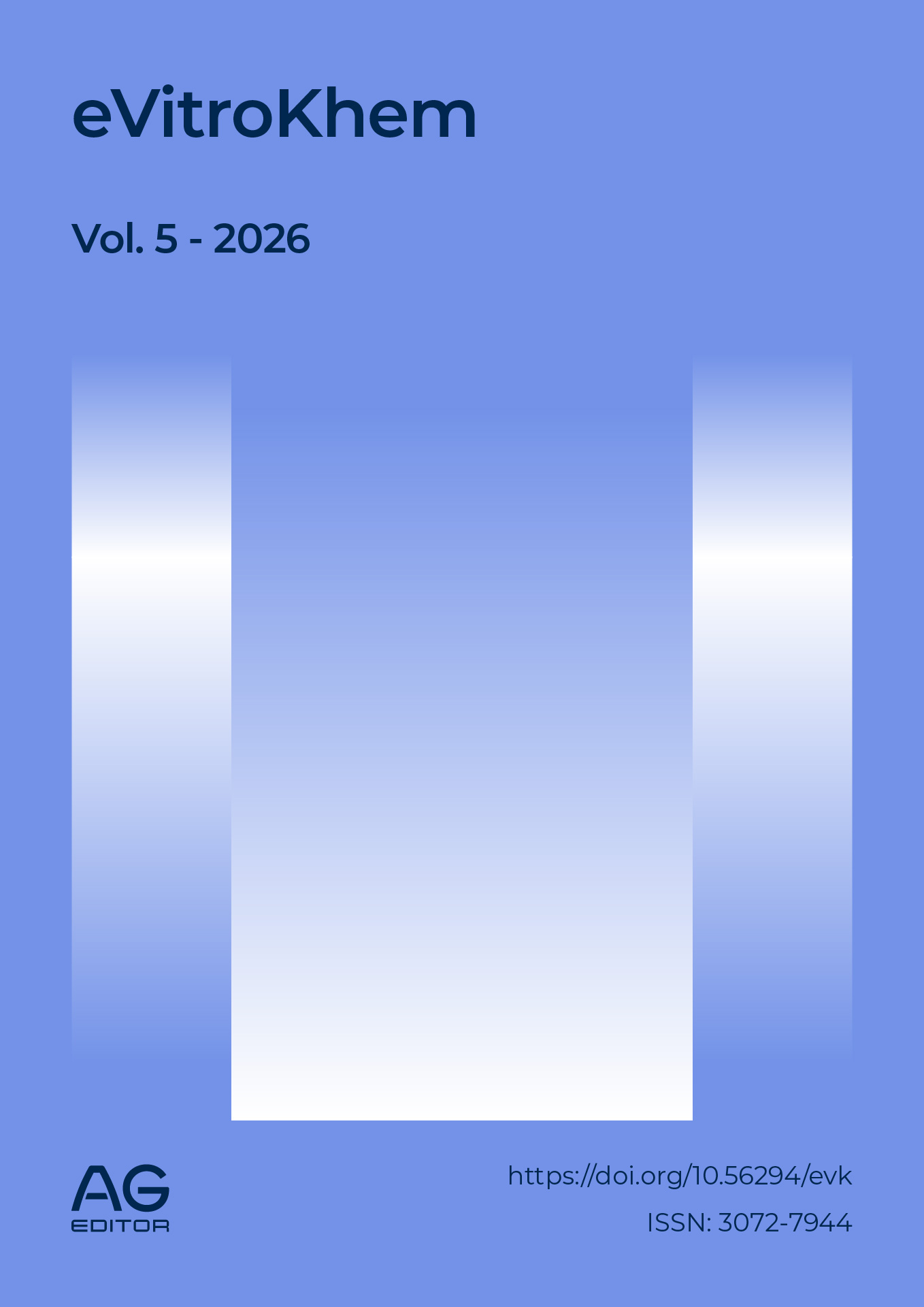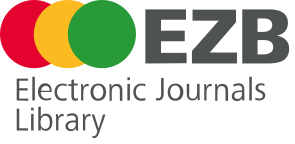Multiscale Modeling in Systems Biology
DOI:
https://doi.org/10.56294/evk2026404Keywords:
Multiscale modeling, Systems biology, Computational ModelsAbstract
Multiscale modeling in systems biology is a methodological approach designed to represent, integrate, and simulate complex biological phenomena occurring across various organizational levels, from the molecular to the tissue scale. In contrast to reductionist perspectives, this holistic framework acknowledges that biological processes emerge from dynamic interactions among components operating simultaneously in multiple spatial and temporal scales. Its development has been facilitated by the growing availability of omics data and the evolution of advanced computational tools, enabling the creation of realistic and predictive simulations.
This article reviews theoretical foundations and current applications of multiscale modeling in key fields such as personalized medicine, computational pharmacology, tissue engineering, and clinical simulation. It covers integration strategies such as hierarchical and concurrent coupling, and highlights the use of specialized platforms like GROMACS, NAMD, SimBiology, and PhysiCell. The advantages of this modeling approach include the design of individualized treatments, virtual testing of biomaterials, and the optimization of clinical trials through simulated cohorts.
Multiscale models allow not only a more accurate representation of biological systems but also enable the anticipation of pathophysiological dynamics, reduce drug development timelines, and enhance clinical decision-making. Their future effectiveness will depend on data interoperability, algorithmic refinement, and integration with artificial intelligence. Ultimately, multiscale modeling is a foundational tool for advancing toward a more predictive, contextual, and adaptive biology suited to the evolving challenges of contemporary medicine.
References
1. Vargas Liébanas E, Martínez Castro JA, Díaz Beltrán L, Esteban Ruiz FJ. La biología de sistemas y su aplicación en el estudio de enfermedades complejas. Semin Méd ISSN 0488-2571 Vol 64 No 1 2024 Págs 61-71 2024.
2. Neira AL, Luzuriaga JM, Neira NL. Predicción Basada en Biología de Sistemas de Genes Humanos Asociados a la Infección por el Virus del Dengue. Polo Conoc 2025;10:3131-49. https://doi.org/10.23857/pc.v10i5.9633.
3. Martínez-López N, Vilas Fernández C, García MR. Modelado multi-escala y optimización de la dinámica de resistencia bacteriana a antimicrobianos. Universidad de Burgos; 2022.
4. Estevez Labori F, González Suárez A. Modelado computacional de la ablación de tejidos biológicos por electroporación irreversible utilizando campo eléctrico pulsado de alta intensidad. XLI Congr. Anu. Soc. Esp. Ing. Bioméd., España: 2023.
5. Cisneros RFR, Millán NO, Parra JMF. Modelado computacional y simulación social como soporte para comprender la complejidad. Rev Iberoam Complejidad Cienc Económicas 2024;2:29-39. https://doi.org/10.48168/ricce.v2n4p29. DOI: https://doi.org/10.48168/ricce.v2n4p29
6. Carr GE, Jáuregui NM, Antonelli NA, Ballarín FM, Urquiza SA. Diseño in Silico de Scaffolds Nanofibrosos Biomiméticos 3D para Ingeniería de Tejidos: Desarrollo de Geometrías Paramétricas y Validación de Modelo Hiperelástico. Mecánica Comput 2024;41:903-11. https://doi.org/10.70567/mc.v41i17.89. DOI: https://doi.org/10.70567/mc.v41i17.89
7. Sun X, Bao J. Multiscale mathematical models for biological systems. Front Math China 2023;18:75-94. https://doi.org/10.3868/S140-DDD-023-0011-X.
8. Olguín-Martínez CM, Rivera RIB, Perez RLR, Guzmán JRV, Romero-Carazas R, Suárez NR, et al. Applications of augmented reality technology in design process. Gamification Augment Real 2024;2:33-33. https://doi.org/10.56294/gr202433. DOI: https://doi.org/10.56294/gr202433
9. Gonzalez-Argote D, Gonzalez-Argote J, Machuca-Contreras F. Blockchain in the health sector: a systematic literature review of success cases. Gamification Augment Real 2023;1:6-6. https://doi.org/10.56294/gr20236. DOI: https://doi.org/10.56294/gr20236
10. Araujo-Inastrilla CR. Big Data in Health Information Systems. Semin Med Writ Educ 2022;1:6. https://doi.org/10.56294/mw20226. DOI: https://doi.org/10.56294/mw20226
11. Rincón JLG, Rodríguez RRC. Considerations for the calculation of the Water Quality Risk Index according to current sanitary and epidemiological trends. Environ Res Ecotoxicity 2023;2:58-58. https://doi.org/10.56294/ere202358. DOI: https://doi.org/10.56294/ere202358
12. Rincón JLG, Rodríguez RRC, Boshell LDP. Towards a Comprehensive Assessment of Water Quality in Colombia: Challenges and Proposals in the Face of Emerging Contaminants. Environ Res Ecotoxicity 2023;2:56-56. https://doi.org/10.56294/ere202356. DOI: https://doi.org/10.56294/ere202356
13. Masó JRH, Ferrer RL. Level of satisfaction with the results of science and technology processes in the context of medical education. Semin Med Writ Educ 2025;4:38-38. https://doi.org/10.56294/mw202538.
14. Prada M del CM, García FG, Morales MÁM, Auza-Santivañez JC. Chronic Kidney Disease, Mortality in the Elderly in Cuba. Multidiscip Montev 2024;2:97-97. https://doi.org/10.62486/agmu202497. DOI: https://doi.org/10.62486/agmu202497
15. Llerandi JV, Peralta EM, González M del CF, Borrego AP. Environmental factors associated with cleft lip and palate in children treated at the William Soler Hospital. Salud Cienc Tecnol 2024;4:772-772. https://doi.org/10.56294/saludcyt2024772.
16. Chiesa PO. Skin cancer prevention: a systematic review of the efficacy of clinical trial-based interventions. AG Salud 2024;2:10-10. https://doi.org/10.62486/agsalud202410. DOI: https://doi.org/10.62486/agsalud202410
17. Cano AMC, Gamboa AJP. Artificial intelligence in strengthening health services: a critical analysis of the literatura. Health Leadersh Qual Life 2024;3:.422-.422. https://doi.org/10.56294/hl2024.422. DOI: https://doi.org/10.56294/hl2024.422
18. Caballero GDR, Valiente RMM, Caró ET, Mesa LNT, Rojas NH, Mesa G del R. Improving the performance of the General Practitioner in the care of cardiovascular risk. Health Leadersh Qual Life 2024;3:.439-.439. https://doi.org/10.56294/hl2024.439. DOI: https://doi.org/10.56294/hl2024.439
19. Flores MAL, Gavilánez MSL. The Impact Of Artificial Intelligence On Innovation And Advances In Medicine. Health Leadersh Qual Life 2024;3:.496-.496. https://doi.org/10.56294/hl2024.496. DOI: https://doi.org/10.56294/hl2024.496
20. Rubira RJG. Detecção de agrotóxicos (coquetel) utilizados nas lavouras de cana-de-açúcar e o efeito destes sobre sistemas biológicos 2024.
21. Vasconcelos AC. Investigação de Distorções Espectrais Causadas por Tecidos Biológicos utilizando o Software Virtual Tissue Simulator 2024.
22. Rosa CM, Michelon M, Folmer V, Souza DOG de. Ansiedade: fatores ambientais e biológicos. Cienc Reflexión 2024;3:628-53. https://doi.org/10.70747/cr.v3i2.57. DOI: https://doi.org/10.70747/cr.v3i2.57
23. Guada L, Dirinó L, Álvarez J, Ron M, Hernández-Runque E. Strategies based on information and communication technologies (ICT), as a didactic tool for the development of the physiotherapy career. Semin Med Writ Educ 2025;4:34-34. https://doi.org/10.56294/mw202534. DOI: https://doi.org/10.56294/mw202534
24. Lambarri J. Modelizado multiescala del proceso del aporte por láser de Inconel 718 mediante polvo soplado 2024.
25. Iturbide P, Orsi X, Denegri MJ, Fioretti S, Ruiz P, Luza S, et al. Modelos de machine learning para estimar la radiación solar en plano horizontal utilizando información satelital multiescala. Av. En Energ. Renov. Medio Ambiente, vol. 27, 2024.
26. Millar-Wilson A, Ward Ó, Duffy E, Hardiman G. Multiscale modeling in the framework of biological systems and its potential for spaceflight biology studies 2022;25. DOI: https://doi.org/10.1016/j.isci.2022.105421
27. Wahed MA, Alqaraleh M, Alzboon MS, Al-Batah MS. AI Rx: Revolutionizing Healthcare Through Intelligence, Innovation, and Ethics. Semin Med Writ Educ 2025;4:35-35. https://doi.org/10.56294/mw202535. DOI: https://doi.org/10.56294/mw202535
28. Michael CT, Almohri SA, Linderman JJ, Kirschner DE. Frontiers | A framework for multi-scale intervention modeling: virtual cohorts, virtual clinical trials, and model-to-model comparisons. Front Syst Biol 2024;4. https://doi.org/10.3389/fsysb.2023.1283341. DOI: https://doi.org/10.3389/fsysb.2023.1283341
29. Llerandi JV, Peralta EM, González M del CF, Borrego AP. Environmental factors associated with cleft lip and palate in children treated at the William Soler Hospital. Salud Cienc Tecnol 2024;4:772-772. https://doi.org/10.56294/saludcyt2024772. DOI: https://doi.org/10.56294/saludcyt2024772
30. Hernández LAR. The pedagogical role of training research seedbeds in the era of artificial intelligence and emerging technologies. Semin Med Writ Educ 2025;4:36-36. https://doi.org/10.56294/mw202536. DOI: https://doi.org/10.56294/mw202536
31. Minucci S, Gruver S, Subramanian K, Renardy M. Frontiers | A multi-scale semi-mechanistic CK/PD model for CAR T-cell therapy. Front Syst Biol 2024;4. https://doi.org/10.3389/fsysb.2024.1380018. DOI: https://doi.org/10.3389/fsysb.2024.1380018
32. Landívar RC, Moreano ALC, Valle VMRD, Chávez-Arizala JF. Risk factors for high blood pressure in older adults of the Provincial Directorate of the MIES of Santo Domingo de los Tsáchilas. Multidiscip Montev 2025;3:62-62. https://doi.org/10.62486/agmu202562. DOI: https://doi.org/10.62486/agmu202562
33. He X, Tan WH. Analysis of the Teaching Effectiveness of Virtual Reality Technology in Higher Education. Salud Cienc Tecnol - Ser Conf 2025;4:1274-1274. https://doi.org/10.56294/sctconf20251274. DOI: https://doi.org/10.56294/sctconf20251274
34. Ceccarelli AS. Modelado de la proliferación celular durante la regeneración y el desarrollo: una aproximación de biología de sistemas. Tesis. Universidad Nacional de La Plata, 2024. https://doi.org/10.35537/10915/174714. DOI: https://doi.org/10.35537/10915/174714
35. About GROMACS — GROMACS webpage. GROMACS 2025. https://www.gromacs.org/about.html (accedido 27 de junio de 2025).
36. NAMD - Scalable Molecular Dynamics. ks.uiuc 2025. https://www.ks.uiuc.edu/Research/namd/ (accedido 27 de junio de 2025).
37. MathWorks, Inc. SimBiology Documentation. MathWorks 2025. https://www.mathworks.com/help/simbio/index.html (accedido 27 de junio de 2025).
38. Masó JRH, Ferrer RL. Level of satisfaction with the results of science and technology processes in the context of medical education. Semin Med Writ Educ 2025;4:38-38. https://doi.org/10.56294/mw202538. DOI: https://doi.org/10.56294/mw202538
39. Ngatman N, Salimi M, Ulfiana U, Hidayah R, Wahyudi ABE, Wahyono W, et al. The Implementation of Problem-Based Learning with Multimedia for Improving Scientific Process Skills. Salud Cienc Tecnol - Ser Conf 2025;4:1247-1247. https://doi.org/10.56294/sctconf20251247. DOI: https://doi.org/10.56294/sctconf20251247
40. Cook CV, Lighty AM, Smith BJ, Ford Versypt AN. Frontiers | A review of mathematical modeling of bone remodeling from a systems biology perspective. Front Syst Biol 2024. https://doi.org/10.3389/fsysb.2024.1368555. DOI: https://doi.org/10.26434/chemrxiv-2024-5vrcc
41. Jeznach O, Tabakoglu S, Zaszczyńska A, Sajkiewicz P. Review on machine learning application in tissue engineering: What has been done so far? Application areas, challenges, and perspectives. J Mater Sci 2024;59:21222-50. https://doi.org/10.1007/s10853-024-10449-2. DOI: https://doi.org/10.1007/s10853-024-10449-2
42. Leonard-Duke J, Agro SMJ, Csordas DJ, Bruce AC, Eggertsen TG, Tavakol TN, et al. Multiscale computational model predicts how environmental changes and treatments affect microvascular remodeling in fibrotic disease. PNAS Nexus 2025;4:pgae551. https://doi.org/10.1093/pnasnexus/pgae551. DOI: https://doi.org/10.1093/pnasnexus/pgae551
43. Ramírez JL, Chica AMG, Intriago NSS, Arizala JFC. Chronic renal failure: Clinical and therapeutic aspects for the approach. Multidiscip Montev 2025;3:60-60. https://doi.org/10.62486/agmu202560. DOI: https://doi.org/10.62486/agmu202560
44. Zhu L, Othman MSB, Yusuf LBM, Sun X. User Acceptance and Sustainable Adoption of University Management Information Systems: a Cross-cultural Study. Salud Cienc Tecnol - Ser Conf 2025;4:1239-1239. https://doi.org/10.56294/sctconf20251239. DOI: https://doi.org/10.56294/sctconf20251239
45. Post JN, Loerakker S, Merks RMH, Carlier A. Implementing computational modeling in tissue engineering: where disciplines meet. Tissue Eng Part A 2022;28:542-54. https://doi.org/10.1089/ten.tea.2021.0215. DOI: https://doi.org/10.1089/ten.tea.2021.0215
46. Mat NAC, Salleh SSMM. The effect of board of director diversity on company performance and the mediating role of director remuneration: Malaysia public companies’ evidence. Salud Cienc Tecnol - Ser Conf 2025;4:1240-1240. https://doi.org/10.56294/sctconf20251240. DOI: https://doi.org/10.56294/sctconf20251240
47. Puniya BL, Verma M, Damiani C, Bakr S, Dräger A. Perspectives on computational modeling of biological systems and the significance of the SysMod community. Bioinforma Adv 2024;4:vbae090. https://doi.org/10.1093/bioadv/vbae090. DOI: https://doi.org/10.1093/bioadv/vbae090
Published
Issue
Section
License
Copyright (c) 2026 Nairobi Hernández Bridon, Alfredo Carlos Rodríguez-Portelles, Arianna Maité Céspedes Rómulo (Author)

This work is licensed under a Creative Commons Attribution 4.0 International License.
The article is distributed under the Creative Commons Attribution 4.0 License. Unless otherwise stated, associated published material is distributed under the same licence.






